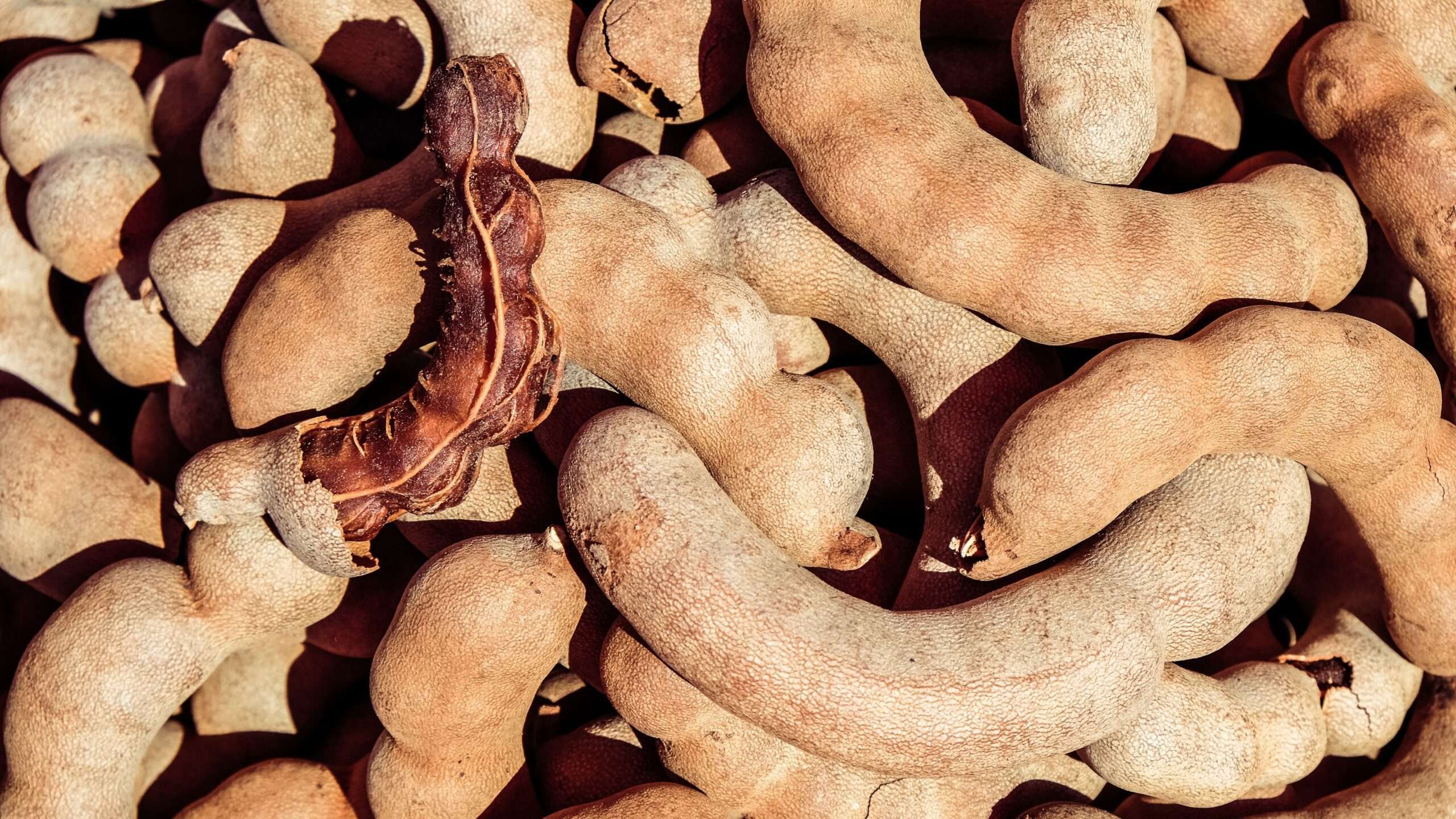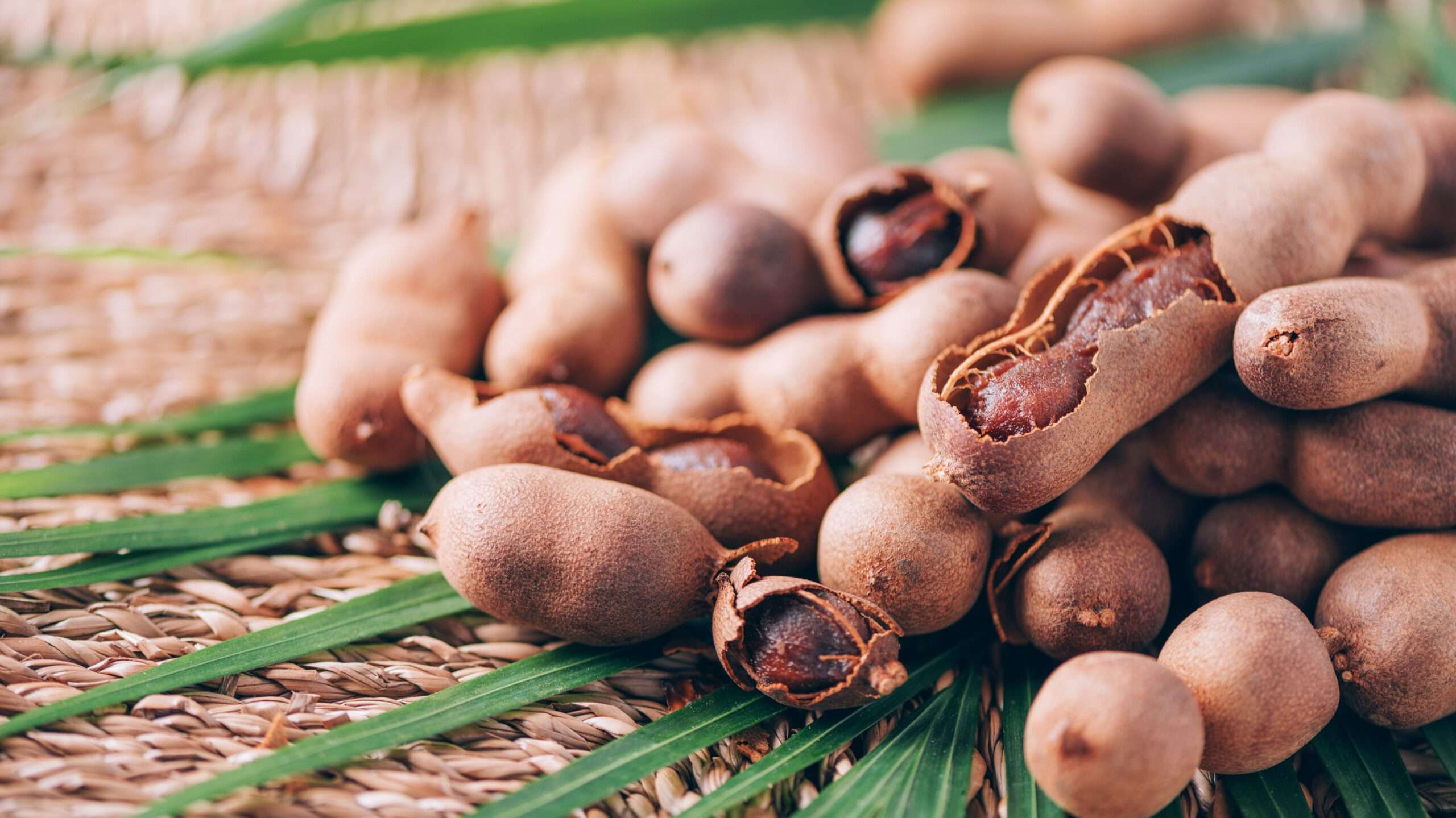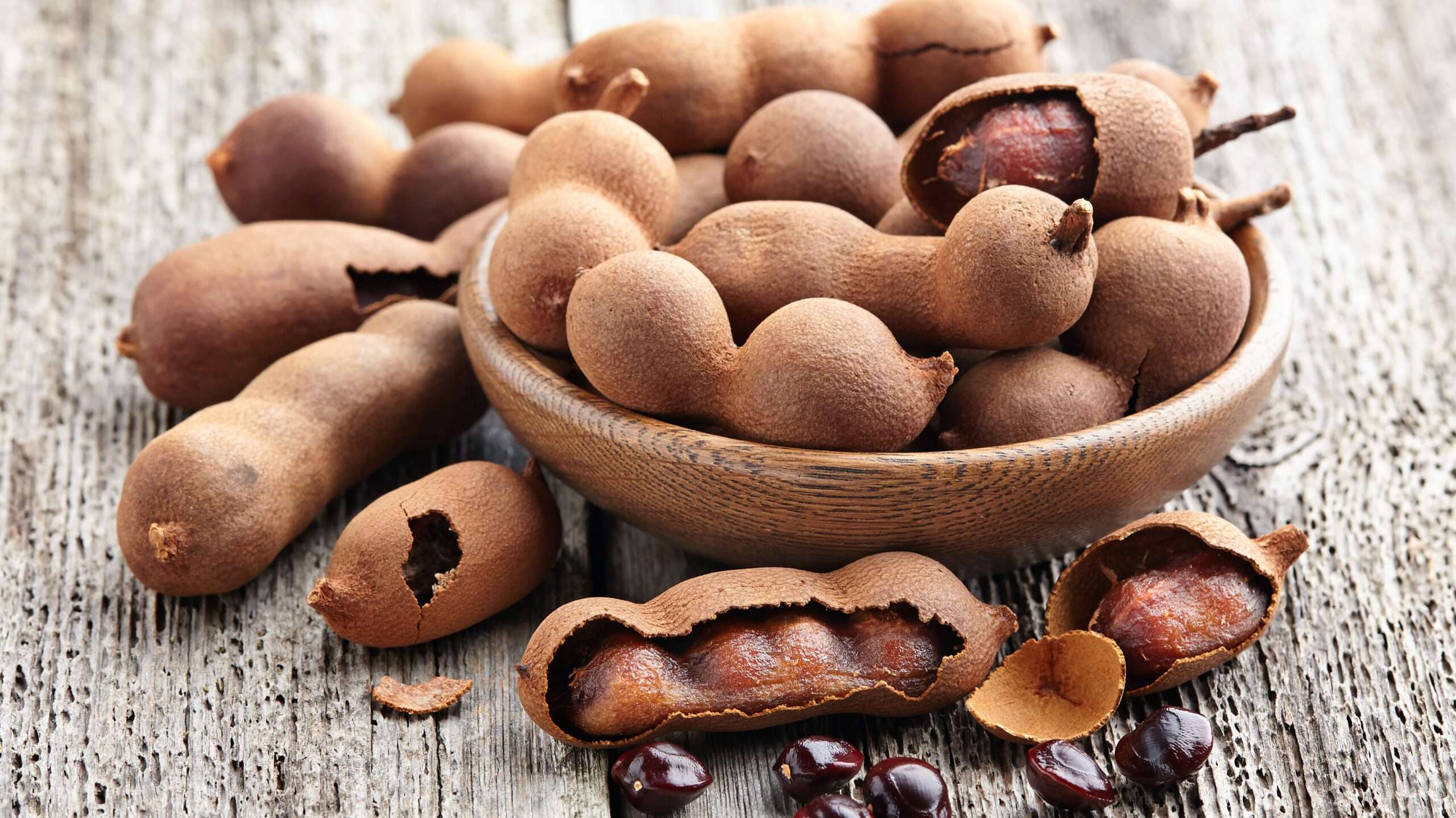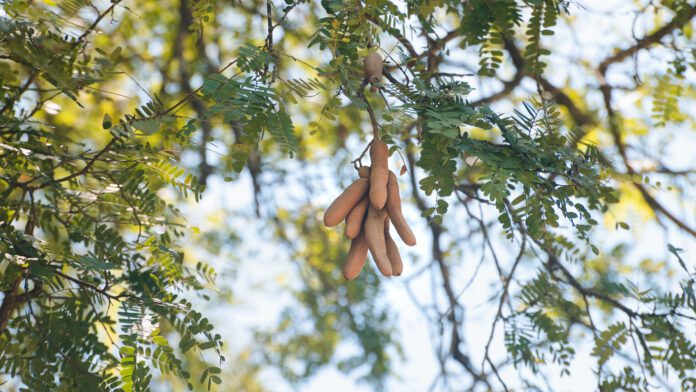The Economic, Climatic, and Culinary Aspects of Tamarind
Tamarind, known as the “date of India” due to its resemblance to dates, is an essential Non-Timber Forest Product (NTFP) commonly found in tribal regions across India. This versatile tree plays a pivotal role in the livelihoods of tribal communities and is a significant component of Indian cuisine. In this article, we will explore the multifaceted world of tamarind, from its economic importance to its climate resilience and culinary uses.
Table of Contents

Tamarind in Tribal Communities
Tamarind serves as a vital source of income for tribal communities in India. Its cultivation and trade have been deeply ingrained in their traditions for generations. The fruit is not only a source of economic sustenance but also a part of their dietary habits.
The Growing Demand for Tamarind in India
Tamarind enjoys immense popularity in India, especially in the Southern States, where it is a key ingredient in the preparation of dishes like Charu and Sambhar. The rising demand for tamarind has made it a valuable commodity, but unfortunately, the primary collectors often receive a meager share of the profits.
Tamarind: A Climate-Resilient Tree
One of the remarkable aspects of tamarind is its resilience to various climatic conditions. It can thrive in a range of environments, making it an invaluable asset for farmers facing the challenges of climate change.
Tamarind Market Prices
The market prices of tamarind can vary significantly across different regions of India. In Shimoga, the maximum price of tamarind fruit reaches up to 16,000 INR per quintal, while in Mumbai, it can drop as low as 4,000 INR per quintal, showcasing the price disparities across varieties. The average price hovers around 9,625 INR per quintal.
Tamarind in Indian Cuisine
Tamarind’s tangy and unique flavor has made it a staple in Indian cuisine. It is often used as a pulp to flavor South Indian curries and chutneys, contributing to the rich and diverse taste of the region’s dishes.
The Origin of Tamarind
While the tamarind tree may have its roots in Africa, historical records reveal its widespread presence in South Asia, where it has evolved to produce larger pods. The fruit, with its brown, sticky appearance, earned it the moniker “the date of India.”
Tamarind Tree Characteristics
The tamarind tree, scientifically known as Tamarindus indica, is a large, leguminous tree with dense foliage and long, drooping branches. It can reach an impressive height of up to 80 feet, creating a stunning presence in its environment.
Tamarind Fruit Description
Tamarind pods are bean-shaped, with a hard outer shell protecting the soft, deep-brown pulp inside. This edible fruit pulp is enveloped by a network of fibrils, and each pod contains 2-10 dark-brown seeds.
Also read: Seed Balls: Ensuring Afforestation on Degraded Lands and Forests
Tamarind Tree Growth and Environmental Preferences
Tamarind trees thrive in full sun and exhibit a remarkable resistance to drought and aerosol salt, making them ideal for tropical and subtropical regions. Their leaves, bright green and pinnately lobed, create a striking visual effect, particularly when they close up at night.
Tamarind Leaves and Flowers
The tamarind tree’s evergreen leaves are alternately arranged and pinnately veined. The pinnate leaves, with their opposite leaflets, dance gracefully in the wind, contributing to the tree’s unique appearance. The tree’s flowers are inconspicuous but charming, with red and yellow elongated blossoms.
Tamarind Timber
Tamarind timber is known for its hard, dark red heartwood and softer, yellowish sapwood. These qualities make it valuable for various applications, including woodworking.
Tamarind Flowering
Tamarind trees produce small racemes of flowers with 2.5 cm wide, five-petalled blooms. Buds, initially pink, lose their color when the flowers bloom, creating a vibrant display of red and yellow hues.
Tamarind, with its rich history, economic significance, and diverse uses, stands as a symbol of resilience and versatility. Its presence in tribal communities and Indian cuisine underscores its importance. As we appreciate the many facets of this remarkable tree, let us also recognize the challenges it faces in the modern world.
The Versatile Tamarind: Fruit, Cultivation, and Horticulture

Tamarind, with its distinctive fruit and diverse uses, is a remarkable tree with a worldwide presence. In this article, we delve into the characteristics of tamarind fruit, its role in India’s production, its culinary significance, cultivation techniques, global distribution, nutritional potential, and horticultural applications.
Tamarind Fruit: A Unique Delight
Tamarind produces a unique fruit known as an indehiscent legume or pod, measuring between 12 to 15 cm (4+1⁄2 to 6 in) in length. This fruit features a hard, brown shell that protects a fleshy, juicy, and acidic pulp. The fruit reaches maturity when the flesh turns brown or reddish brown.
Interestingly, Asian tamarinds have longer pods containing six to 12 seeds, while African and West Indian varieties have shorter pods with one to six seeds. The fruit’s flavor profile is a delightful combination of sweet and sour, with notable quantities of tartaric acid, sugar, B vitamins, and even calcium—unusual for a fruit.
India: The Leading Tamarind Producer
India holds the distinction of being the largest producer of tamarind globally. This is a testament to the fruit’s significance in the cuisines of the Indian subcontinent, Southeast Asia, and the Americas, particularly Mexico.
Cultivating Tamarind Seeds
To promote germination, tamarind seeds can be scarified or briefly boiled. Remarkably, these seeds maintain their germination capability for several months if kept dry. Tamarind has become naturalized in various regions, including Indonesia, Malaysia, Sri Lanka, the Philippines, the Caribbean, and Pacific Islands.
In parts of Southeast Asia, it goes by the name “asam.” Tamarind cultivation thrives in multiple Indian states, such as Maharashtra, Chhattisgarh, Karnataka, Telangana, Andhra Pradesh, and Tamil Nadu. The vast tamarind orchards in India collectively yield an impressive annual production of 250,000 tonnes (280,000 short tons).
Tamarind’s Nutritional Potential
In Africa, tamarind is a traditional food plant with the potential to enhance nutrition, improve food security, support rural development, and contribute to sustainable landcare. Notably, in Madagascar, tamarind’s fruit and leaves are a favored food resource of the ring-tailed lemur, constituting up to 50 percent of their diet when available.
Tamarind in Horticulture
Tamarind trees find applications beyond their fruit. Throughout South Asia and tropical regions globally, these trees serve as ornamental plants, enhance garden landscapes, and provide a source of cash crops. In various Asian countries, tamarind is often cultivated as a bonsai species, and it even thrives as an indoor bonsai in temperate regions.
The Diverse Uses of Tamarind

Tamarind, a versatile fruit, offers a wide array of applications, from flavoring dishes to traditional medicine and even woodworking. In this article, we’ll explore the multifaceted uses of tamarind, highlighting its culinary, medicinal, and practical applications.
Read more: Cultivating Ashwagandha: Bridging Tradition, Medicine, and Commerce
Tamarind as a Souring Agent
Tamarind’s refreshing sour taste is a culinary delight, especially in South India, where it plays a prominent role in many dishes. Ancient Tamil literature contains numerous references to the use of tamarind to enhance flavors. It’s known for its ability to impart a unique tang to various recipes.
Medicinal and Nutritional Uses
Tamarind has a history of use in traditional South Asian medicine. It’s known for its medicinal properties, and its fruits and leaves are used in various remedies. Tamarind-flavored drinks are often prescribed to patients with fever, sometimes mixed with lime, honey, milk, and spices.
Culinary Uses of Tamarind
Tamarind seeds are a common ingredient in many recipes, particularly in southern India. They are roasted, soaked in buttermilk and salt, and even used to prepare snacks. Tamarind or chinch seed flour is used in Maharashtra to make dal vada, adding a unique crispiness to the fritters. It’s a versatile flour used in various culinary applications, including baking and enriching roti dough.
Tamarind in Beverages
Tamarind pulp is used to prepare tamarind juice, a popular beverage in many regions. In Indonesia, it’s known as “es asem” and is served with palm sugar and ice for a refreshing sweet and sour drink. In Mexico and the Caribbean, tamarind pulp is diluted, sweetened, and enjoyed as “agua fresca.”
Tamarind in Folk Medicine
Throughout Southeast Asia, tamarind’s fruit is used as a poultice applied to the foreheads of individuals with fevers. Tamarind exhibits laxative effects due to its high content of malic acid, tartaric acid, and potassium bitartrate. It has been used as a remedy for constipation. In Java, an extract of steamed and sun-dried tamarind pulp is used to treat skin issues.
Tamarind in Woodworking
Tamarind wood is prized for its use in making furniture, boats, carvings, and various wooden objects. Its heartwood, reddish brown with a purplish hue, is durable and resistant to decay and insects. However, it is known for its dense and interlocked grain, making it challenging to work with. Heartwood takes a high natural polish, making it ideal for fine woodworking.
Tamarind as a Metal Polish
Tamarind pulp, with its tartaric acid content, is utilized to polish metal objects, including brass shrine statues, lamps, and copper, brass, and bronze utensils. This natural polish effectively removes tarnish, and it is a common practice in homes and temples in Asian countries.
Tamarind Nutrition Facts
Tamarind not only serves as a flavor enhancer but also offers nutritional value. It’s a sweet and tangy spice-condiment used widely in South-Asian kitchens, adding a unique flavor to a variety of dishes.
Health Benefits and Medicinal Uses of Tamarind

Tamarind, known for its unique flavor and culinary applications, offers a treasure trove of health benefits and medicinal uses. In this article, we explore the valuable components of tamarind that contribute to well-being and its historical use in traditional medicine.
Dietary Fiber in Tamarind
Tamarind fruit is a nutritional powerhouse, packed with essential volatile chemical compounds, minerals, vitamins, and dietary fiber. Its sticky pulp is a rich source of non-starch polysaccharides (NSP), including gums, hemicelluloses, mucilage, pectin, and tannins. Just 100 grams of tamarind pulp provides over 13% of dietary fiber, which has several health benefits.
Protection Against Constipation
Dietary fiber in tamarind adds bulk to food and promotes healthy bowel movements, preventing constipation. Furthermore, it acts as a shield against toxins in food, safeguarding the colon mucosa from cancer-causing chemicals.
Lowering Cholesterol Levels
Tamarind’s dietary fiber is also instrumental in lowering cholesterol levels. It binds to bile salts, reducing their reabsorption in the colon and facilitating the expulsion of “bad” LDL cholesterol from the body.
Antioxidant Properties of Tamarind
Tamarind contains tartaric acid, which not only imparts a sour taste to food but also functions as a potent antioxidant. This quality helps the human body combat harmful free radicals and oxidative stress.
Medicinal Phytochemicals
Tamarind boasts numerous volatile phytochemicals, including limonene, geraniol, safrole, cinnamic acid, methyl salicylate, pyrazine, and alkylthiazoles. These compounds collectively contribute to the medicinal properties of tamarind, making it more than just a culinary spice.
Rich in Essential Minerals
Tamarind is a good source of essential minerals such as copper, potassium, calcium, iron, selenium, zinc, and magnesium. These minerals play various vital roles in maintaining the body’s health, from controlling heart rate and blood pressure to aiding in red blood cell production.
Abundance of Vital Vitamins
In addition to minerals, tamarind is rich in crucial vitamins, including thiamin, vitamin-A, folic acid, riboflavin, niacin, and vitamin-C. These vitamins function as antioxidants and co-factors for various enzyme metabolism processes in the human body.
Medicinal Uses of Tamarind in Traditional Medicine
Beyond its culinary and nutritional merits, tamarind has a long history in traditional medicine. Its pulp has been employed as a laxative, digestive aid, and remedy for biliousness and bile disorders. It also serves as an emulsifying agent in various pharmaceutical products, including syrups and decoctions.
A Guide to Selecting, Storing, and Using Tamarind

Tamarind, with its sweet and sour flavor, is a culinary gem in Indian, Middle Eastern, and South-East Asian cooking. In this article, we explore how to select, store, and make the most of this versatile ingredient in your kitchen.
Selection and Storage
- Fresh vs. Processed Tamarind: Fresh tamarind typically hits the markets in late spring and early summer. However, processed forms like tamarind blocks, slices, paste, concentrates, and balls are available year-round in condiment stores and spice markets. If opting for fresh tamarind, look for unbroken pods packed in boxes. When choosing processed tamarind, go for products from reputable brands, and avoid old or off-smelling options.
- Proper Storage: Once you bring tamarind home, store the pods or pulp in the refrigerator. When stored correctly, tamarind can stay fresh for several months.
Culinary Uses of Tamarind
Tamarind’s unique flavor makes it a sought-after ingredient in various cuisines. Here’s how you can make the most of it in your culinary creations:
- Fresh Tamarind Pods: In some Indian households, fresh tamarind pods are opened, and the pulp is used as needed. The seeds are manually removed by striking the tamarind beans with a wooden stick or using a paring knife to separate seeds from pulp.
- Preparing Tamarind Sauce: To use tamarind as a condiment, soak a small portion of the pulp in half a cup of warm water for about 10 minutes. Swirl the pulp to dissolve it evenly in the water, creating a thin sauce. Before using in your cooking, strain the juice through a filter or thin cloth sieve.
Serving Tips
Tamarind finds its way into a variety of dishes and beverages. Here are some serving ideas:
- Indian and South-East Asian Dishes: Tamarind is a common ingredient in curries, rasam, chutneys, vegetable, and lentil recipes.
- Hot and Sour Soups: Tamarind’s sweet and sour profile enhances hot and sour soups and marinades.
- Tamarind Drink: Tamarind juice, made with dates, sugar, honey, cardamom, cloves, and coriander seeds, is a refreshing beverage found in various parts of the world.
- Confectionery: Tamarind pulp is used in confectioneries as a solidifying agent and can be enjoyed as candy when rolled in sugar.
Ways to Use Tamarind in Cooking and Preparation
In India, tamarind is a culinary cornerstone, adding its characteristic sourness to many dishes. It’s used in curries, chutneys, marinades, preserves, pickles, and sherbets. An interesting twist is to roll tamarind pulp in sugar and enjoy it as a delightful candy.
Safety Profile
Tamarind is renowned for its safety. There have been no reported cases of allergies or toxicity associated with tamarind consumption. It is considered safe for use during pregnancy and while nursing.


